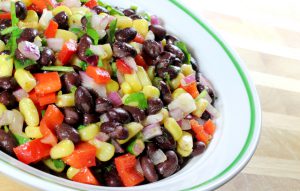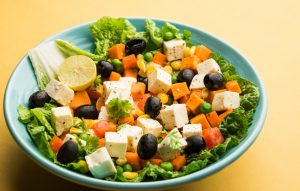
Pregnancy can be a roller coaster ride, especially when managing nutrition with essential fat intake, antioxidants, proteins and keeping food cravings in check. More so if you have been diagnosed with gestational diabetes. However, the good news is that you can sustain a healthy pregnancy by keeping your blood sugar levels in check through proper nutrition, daily physical activity and working closely with your doctors (obstetrician endocrinologist and dietitian). The objective is to follow a meal plan that is easy, manageable, keep your blood sugar low, and leaves you stress-free.
What is Gestational Diabetes?
Gestational diabetes is a condition that occurs during pregnancy and in most cases, disappears after childbirth. In this condition, the mother experiences high blood sugar levels. Hormonal shifts during pregnancy can reduce insulin effectiveness, meaning glucose levels stay high in the blood instead of being taken to the cells for energy. Approximately 4 to 14 out of 100 pregnant women develop gestational diabetes. The risks of gestational diabetes can include complications for mom and baby – a large baby can increase the risk of needing a cesarean section, and uncontrolled blood sugar may put the mother at higher risk of high blood pressure. Medical Nutrition Therapy is the first step in the management of this condition. A balanced diet with optimum calories is essential. The goal is to gain weight according to prenatal BMI, avoid excessive weight gain, and control blood sugar levels.
Here are 7 must-eats to include in your Gestational Diabetes Meal Plan…
- High-fibre foods/Complex Carbs
- Include whole grains, fruits, and vegetables in your daily diet to ensure adequate fibre intake. Include one serving of whole beans and legumes like moong, moth, chana, rajma, lobia, green peas etc.
- A variety of cereals and millets with high-fibre content are recommended. You may prefer brown rice, whole wheat, and millets like jowar, bajra, foxtail etc.
- Take a blend of wheat flour and soya bean flour OR wheat flour and roasted channa flour in the ratio of 4:1 to improve the protein quality. Avoid all refined, processed grain, maida products and bakery products.
- You may enhance the fibre content by blending cereals and millets or by adding vegetables in cereals and millets as in the preparation of vegetable – rotis, rice and porridge.
- Protein-rich food
Vegetarians may prefer milk, yoghurt, cheese, beans, pulses, soya nuggets, tofu, and paneer. Non-vegetarians can include eggs, fish, and chicken. It is preferable to use low-fat milk-toned (3% fat) or double toned (1.5% fat).
- Vegetables
Vegetable salads must be a part of your daily diet. Your diet must include green leafy vegetables, cucumber, tomatoes, carrot, peppers, lettuce, spinach, cabbage, cauliflower, brinjal, capsicum, bottle gourd, ridge gourd. Avoid potatoes, sweet potatoes, colocasia, beetroot and yam.
- Fruits
Fruits offer a great variety of vitamins, nutrients and fibre and can be consumed daily as a snack. The options are endless: sweet limes, oranges, guava, musk melon, apples, papaya, kiwi, watermelon, etc.
However, they must be consumed in quantities as prescribed by a nutritionist and must be consumed as whole fruits and not fruit juices
- Nuts & Oil seeds
Nuts and oil seeds like flax seeds, almonds, walnuts, and groundnuts can be a part of your diet in quantities prescribed by the nutritionist. Avoid coconut or groundnut chutneys.
- Cooking oil
Make sure to use oil in limited quantities – 2 tablespoons or 30ml of oil per day is recommended.
Preferably use groundnut, rice bran, til or soya bean oil. Limit saturated fats like full-cream milk, dairy cream, ghee, salad dressing, red meat etc.
- Fluids
Take fluids in plenty and do so frequently. The minimum intake should be 2-3 litres per day. Tea and coffee consumption must be in moderation.
Gestational diabetes is manageable with timely intervention and medical nutrition therapy. Apart from having a dedicated meal plan, it is important to adhere to scheduled meal timings. It is recommended to eat small frequent meals every 3 hours. Avoid all types of sweeteners even honey, jaggery and sweets and desserts and all high fats, salts, and sugars (HFSS). Observe control on serving size, as a greater quantity of food intake can raise blood sugar. 45-minutes of daily physical activity is a must. You may do so with small breaks and break it up into 10–15-minute sessions half an hour after every meal.
To summarize, the four key factors in the management of blood sugar are meal timings, the quantity of food, quality of food and physical activity. A healthy and safe birth experience is possible even with gestational diabetes.
Please consult with your nutritionist to develop a diet plan that is customized to your nutritional needs.




